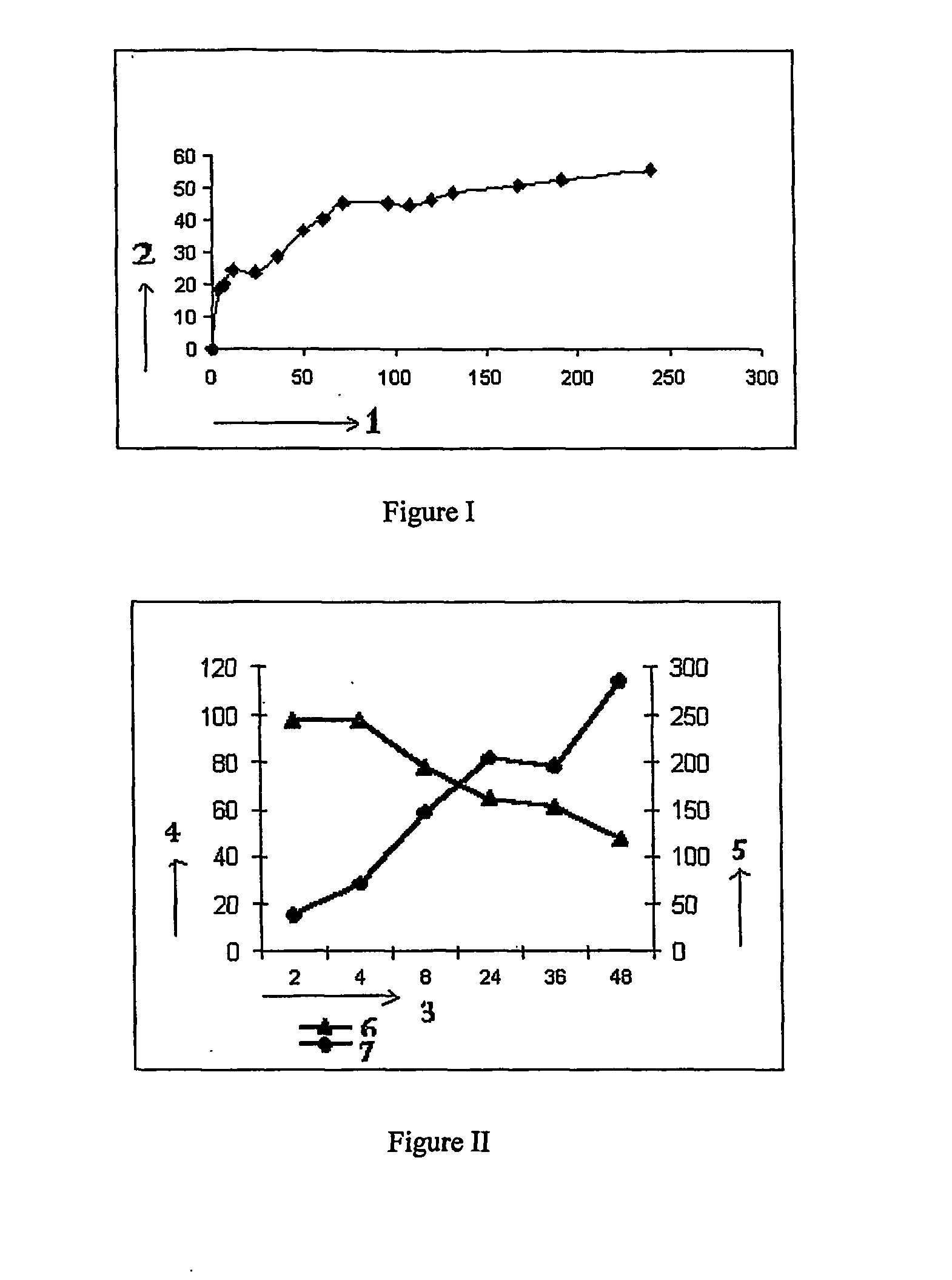Novel biodegradable aliphatic polyesters and pharmaceutical compositions and applications thereof
a technology applied in the field of biodegradable aliphatic polyester and pharmaceutical compositions and applications thereof, can solve the problems of limited hydrolytic stability, less commercial use, and high price of polyethylene, and achieve excellent mechanical properties, good stability, and easy synthesizing
- Summary
- Abstract
- Description
- Claims
- Application Information
AI Technical Summary
Benefits of technology
Problems solved by technology
Method used
Image
Examples
example 1
[0061] A 500 ml three-necked flask equipped with a stirrer and condenser is charged with ethylene glycol and sebacic acid in a molar ratio of 2:1. 0.1% para-toluene sulphonic acid is added as the catalyst. The temperature is gradually increased up to 130° C. with vigorous stirring. The reaction is continued until the distillation of water is completed. 1% zinc acetate is added to carry out the condensation reaction for building up the molecular weight. The reaction is carried out under high vacuum and at a temperature of 180° C. The polyester with the desired molecular weight is formed after 300 minutes of condensation reaction. Solvent evaporation method is used to prepare microparticles in which pharmaceutically active agent [drug] to be encapsulated is added to 5% solution of polymer in dichloromethane. This solution is added to a solution of stabilizer with stirring at 2000 rpm. Stirring is continued for one hour at room temperature to evaporate dichloromethane. The microparticl...
example 2
[0062] The polymer described in example 1 is used for the formulation of microparticles using 1% PVA as the stabilizing agent. The drug:polymer ratio is varied from 1:5 to 1:1. The solvent to non-solvent ratio is fixed at 1:25. The drug entrapment for a water insoluble drug is found to be in the range of 55-90% and that for a water soluble drug is found to be 2-12%
example 3
[0063] The polymer described in example 1 is used for the formulation of microparticles using 0.5% PVA as the stabilizing agent. The drug:polymer ratio is varied from 1:5 to 1:1. The solvent to non-solvent ratio is fixed at 1:25. The drug entrapment for a water insoluble drug is found to be in the range of 70-90% and that for a water soluble drug is found to be 2-12%
PUM
| Property | Measurement | Unit |
|---|---|---|
| body weight | aaaaa | aaaaa |
| particle size | aaaaa | aaaaa |
| temperature | aaaaa | aaaaa |
Abstract
Description
Claims
Application Information
 Login to View More
Login to View More - R&D
- Intellectual Property
- Life Sciences
- Materials
- Tech Scout
- Unparalleled Data Quality
- Higher Quality Content
- 60% Fewer Hallucinations
Browse by: Latest US Patents, China's latest patents, Technical Efficacy Thesaurus, Application Domain, Technology Topic, Popular Technical Reports.
© 2025 PatSnap. All rights reserved.Legal|Privacy policy|Modern Slavery Act Transparency Statement|Sitemap|About US| Contact US: help@patsnap.com

